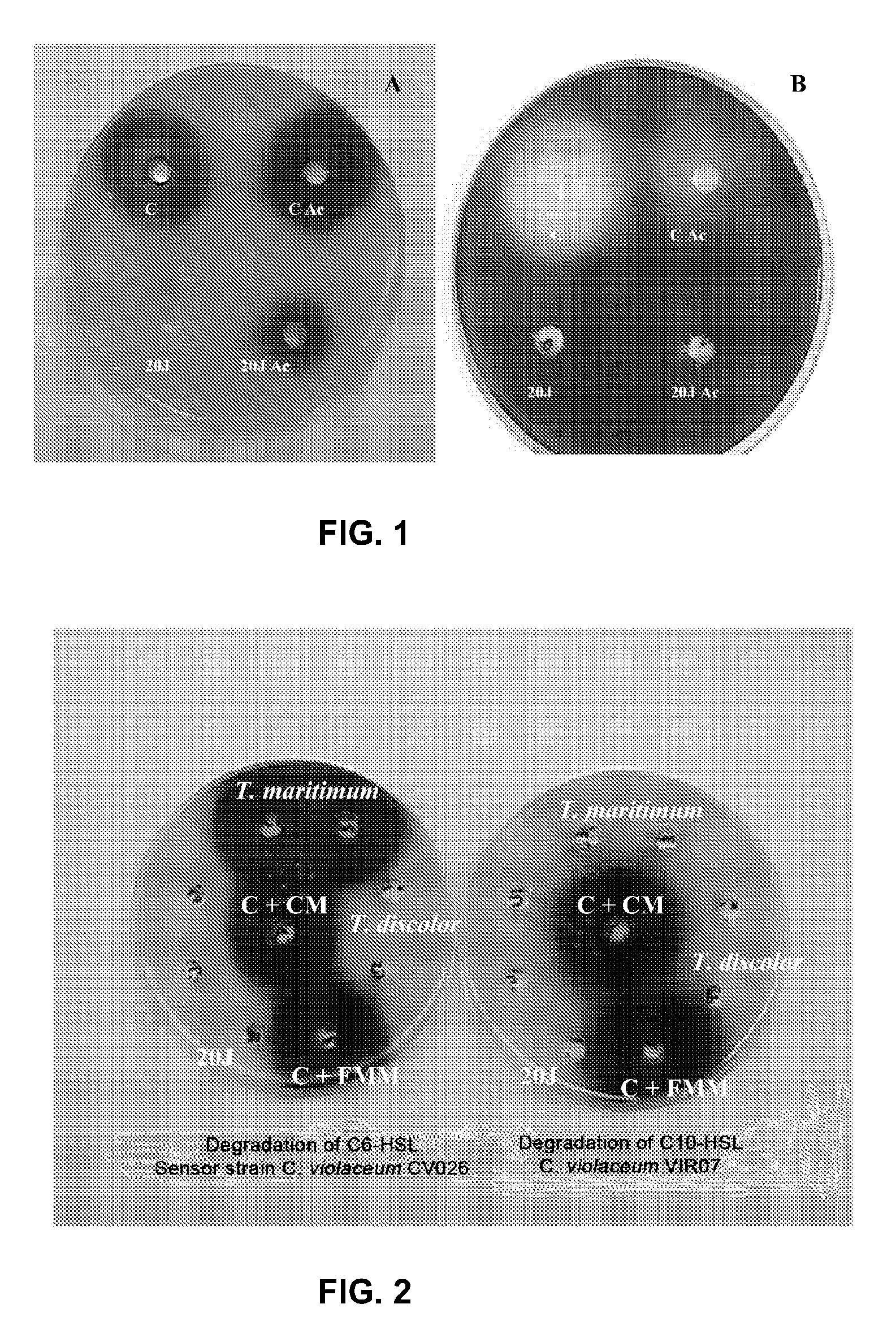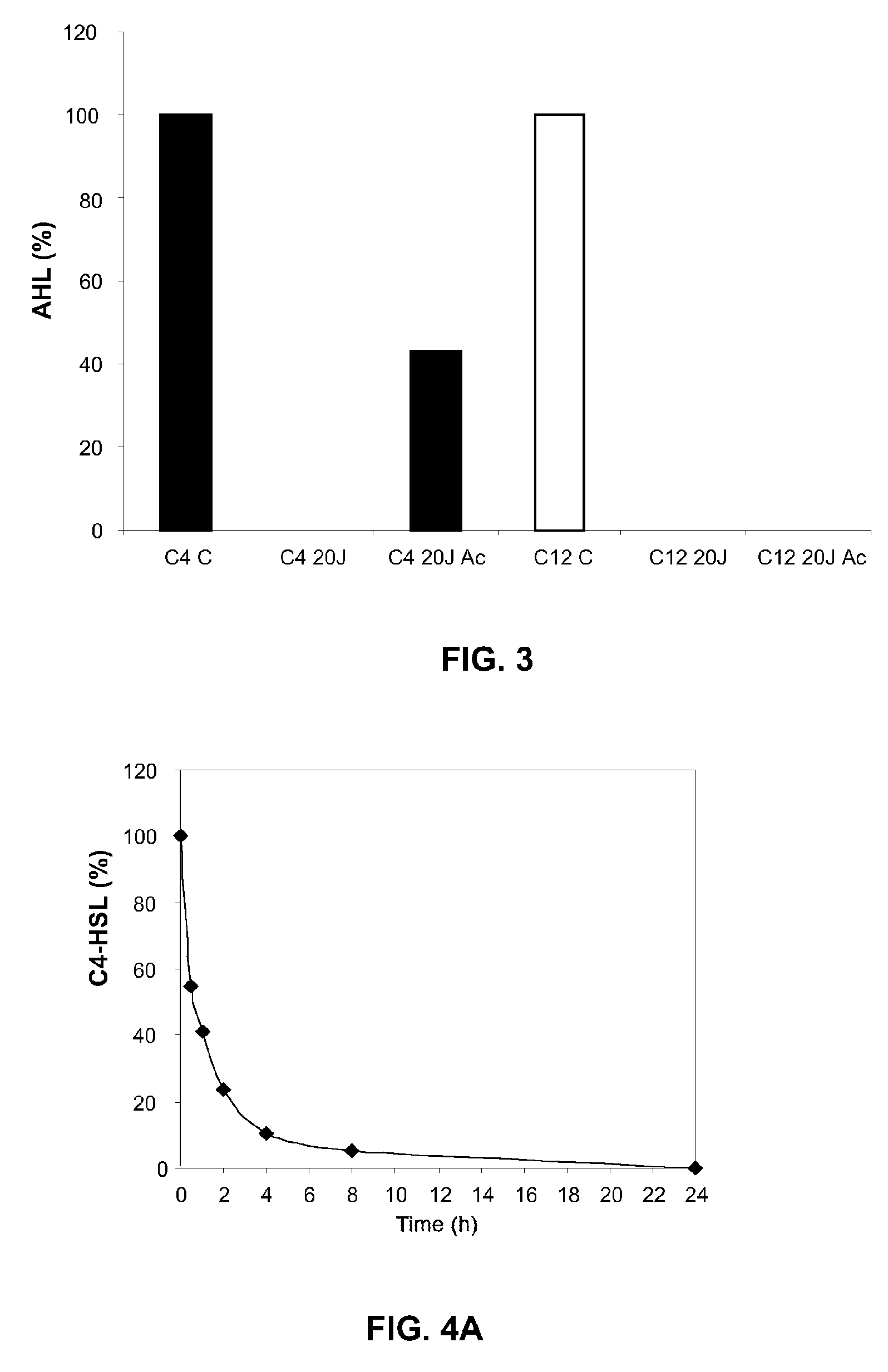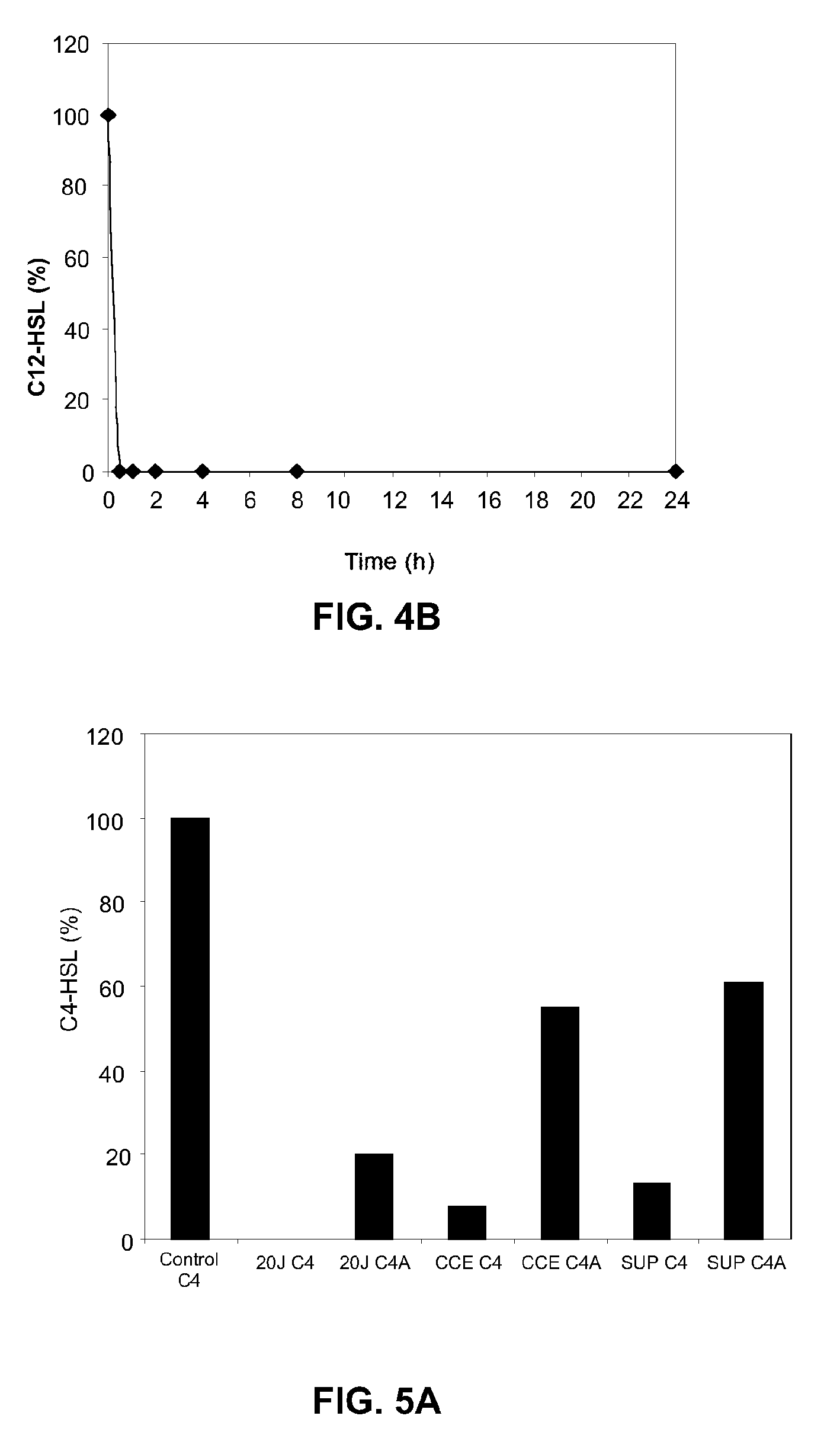Use of bacteria of the genus Tenacibaculum for quorum quenching
a technology of tenacibaculum and bacteria, which is applied in the direction of biocide, plant growth regulators, pharmaceutical non-active ingredients, etc., can solve problems such as patient death
- Summary
- Abstract
- Description
- Claims
- Application Information
AI Technical Summary
Benefits of technology
Problems solved by technology
Method used
Image
Examples
Embodiment Construction
[0008]The selective pressure represented by the large scale application of chemotherapies has enabled the dissemination of microbial strains with mechanisms of resistance that, on many occasions, hinder the suitable clinical treatment, even leading to the death of the patient. Since many bacteria use the QS signal system to synchronize the genetic expression and coordinate the biological activity within a population, controlling the virulence and formation of biofilms among other biological functions, a channel to avoid the increase of mechanisms of resistance of the pathogenic bacteria would be to control these QS signal systems. The inhibition of this signal system is what has been called Quorum Quenching (QQ). The present invention provides the means to control bacterial infections, without exerting selective pressure on the populations of these bacteria and thus avoiding the appearance of resistances as well as for the inhibition of other bacterial colonization processes wherein...
PUM
| Property | Measurement | Unit |
|---|---|---|
| pH | aaaaa | aaaaa |
| volume | aaaaa | aaaaa |
| volume | aaaaa | aaaaa |
Abstract
Description
Claims
Application Information
 Login to View More
Login to View More - R&D
- Intellectual Property
- Life Sciences
- Materials
- Tech Scout
- Unparalleled Data Quality
- Higher Quality Content
- 60% Fewer Hallucinations
Browse by: Latest US Patents, China's latest patents, Technical Efficacy Thesaurus, Application Domain, Technology Topic, Popular Technical Reports.
© 2025 PatSnap. All rights reserved.Legal|Privacy policy|Modern Slavery Act Transparency Statement|Sitemap|About US| Contact US: help@patsnap.com



